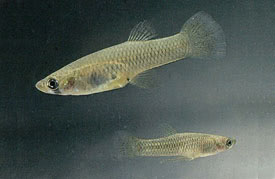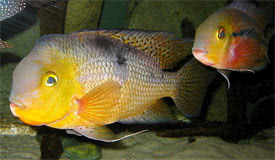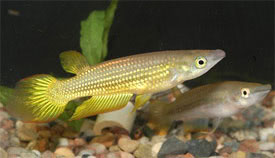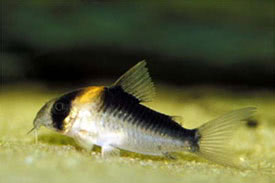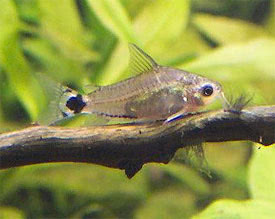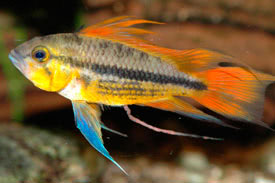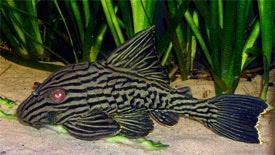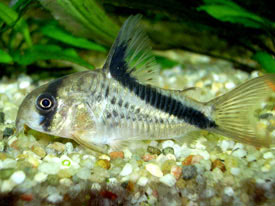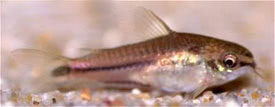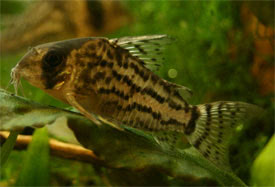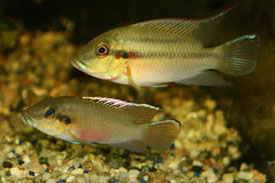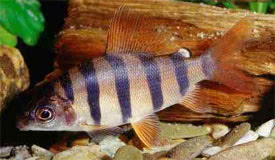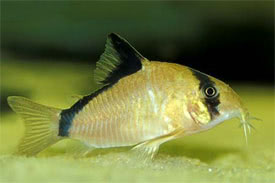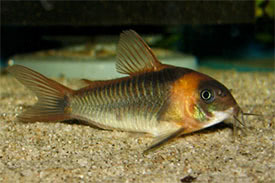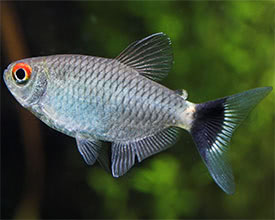
 Magyarul / Hungarian
Magyarul / Hungarian
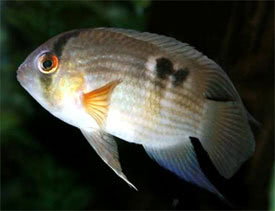

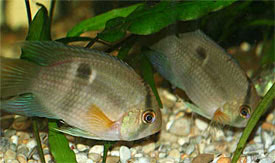
- Scientific name: Cleithracara maronii
- Common name: Keyhole cichlid
- Synonyms: Acara maronii, Aequidens maronii
- Group: Cichlids
- Habitat: South America
- Size: 10 cm.
- Biotope: In the Rio Maroni on the border of Surinam and French Guyana.
- Social behavior: One of the most peaceful of Cich¬lids, can be combined with small schooling fishes.
- Diet: Omnivorous, all types of live foods; flakes, tablets
- Breeding: Quite easy
- Tank: Minimum 100 litres.
- Population: 1 pair for 100 litres
- Decoration: Needs a bottom of fine gravel or sand with hiding places among rocks and roots. Suggest an open area for swimming. They hardly dig in the substrate.
- Temperature: 22-25°C
- pH: 6-7,7
- Hardness: 3-20 NK°
- Lifespan: 10 years
Description: The body has a mottled yellowish cream coloration, sometimes brown. Occasionally the body is marked with faint lateral lines. A curved, dark band runs through the eye, from the front ray of the dorsal fin, down to the corner of the gill cover. The keyhole shaped marking, which the keyhole cichlid gets it's name from is located near the midsection of the body. The fish are nervous and easily frightened at which time they turn an irregular brown. The Keyhole Cichlid requires frequent partial water changes.
It is difficult to distinguish sexes, the male's anal fin is normally longer and the female is often smaller in size. For breeding use slightly acid, soft to me¬dium-hard water, pH 6.5 and hardness 4-12° dGH, at temperatures between 73-79° F (23-26° C). An open breeder, the fish lays as many as 300 eggs on care¬fully cleaned rocks. The eggs are pro¬tected and fanned by the parent's fins to keep the water circulating. The fry hatch after 3-5 days and are free-swimming several days later. Start feeding with roftiers and Artemia nauplii. The parents may continue their care for the fry for up to six months.



